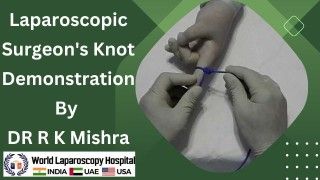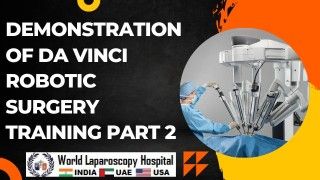Exploring the World of Robotic Surgery: A Comparative Study of DaVinci and TransEnterix Systems
Add to
Share
1,430 views
Report
2 years ago
Description
Robotic surgery is becoming increasingly popular in modern medicine due to its ability to provide more precise and minimally invasive surgical procedures. The two most commonly used robotic systems are the DaVinci and TransEnterix systems, each with its unique features and benefits. This comprehensive study aims to compare and contrast the DaVinci and TransEnterix systems, highlighting their differences in terms of surgical techniques, accuracy, cost, and overall outcomes. By providing a detailed analysis of these two systems, this study will help surgeons, medical professionals, and patients make informed decisions about which system is best suited for their needs. Robotic surgery is a modern surgical technique that has revolutionized the field of minimally invasive surgery. This advanced surgical method uses robotic arms and cameras to perform precise and complex surgical procedures with unparalleled accuracy and control. The two most commonly used robotic systems in surgery are the DaVinci and TransEnterix systems, both of which are designed to provide a minimally invasive approach to surgery. The DaVinci system is the most widely used robotic surgical system in the world and is known for its high level of precision and ease of use. It consists of four robotic arms, a 3D HD vision system, and a console that the surgeon operates from. The robotic arms are controlled by the surgeon's hand movements, and the 3D HD vision system provides a clear, detailed view of the surgical site. The DaVinci system has been used for a variety of surgical procedures, including urologic, gynecologic, cardiac, and general surgery. The TransEnterix system is a newer robotic surgical system that has gained popularity in recent years. It consists of a single robotic arm and a 3D vision system that allows for precise surgical maneuvers. The TransEnterix system is designed to be highly versatile, allowing surgeons to perform a variety of procedures, including hernia repair, gallbladder removal, and colorectal surgery. This comparative study aims to provide an in-depth analysis of the DaVinci and TransEnterix systems, comparing their features, benefits, and drawbacks. The study will explore the surgical techniques used by each system, the accuracy and precision of their procedures, their cost-effectiveness, and overall outcomes. By providing a comprehensive review of these two systems, the study will help medical professionals and patients make informed decisions about which system is best suited for their surgical needs. In conclusion, this comparative study will provide a detailed and comprehensive analysis of the DaVinci and TransEnterix robotic surgical systems, offering medical professionals and patients a better understanding of the features, benefits, and drawbacks of each system. By comparing these two systems, this study will help advance the field of robotic surgery and pave the way for improved surgical outcomes. Robotic surgery is an emerging field that has revolutionized the way surgeries are performed. The DaVinci and TransEnterix systems are two of the most popular robotic surgical systems in use today. The DaVinci system is a robotic surgical system that uses a 3D camera and instruments controlled by a surgeon sitting at a console to perform complex surgeries with precision and accuracy. The TransEnterix system, on the other hand, is a next-generation robotic surgical system that uses advanced imaging technology and machine learning algorithms to enable surgeons to perform minimally invasive surgeries with greater control and flexibility. This comprehensive study will explore the differences between these two systems, their advantages and disadvantages, and the potential impact they could have on the future of surgery.
Similar Videos






